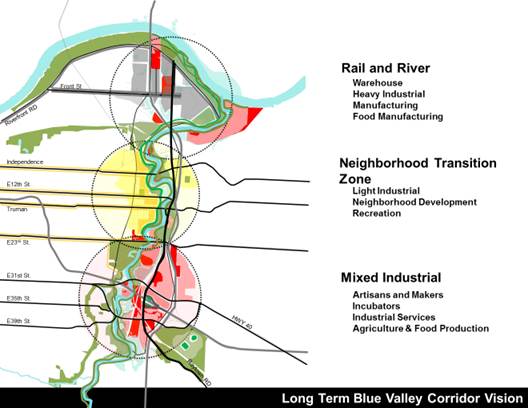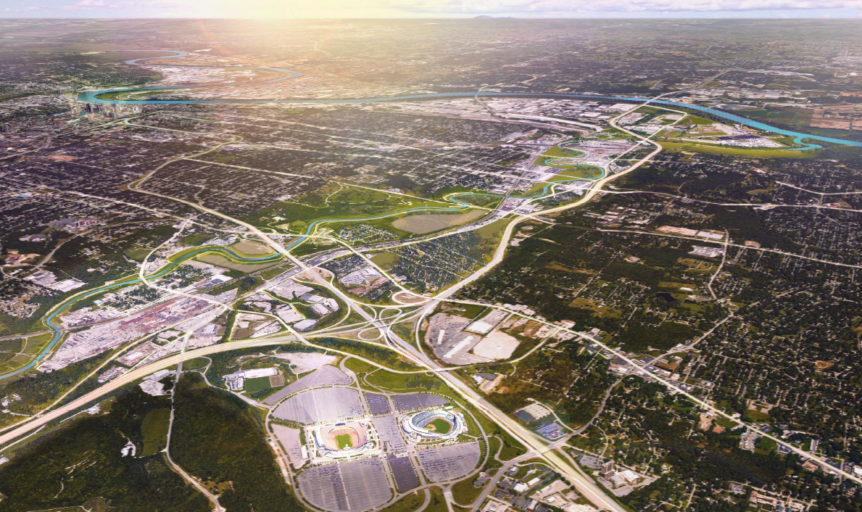HR&A Advisors, real estate and economic development consultants based in New York, presented its findings earlier this fall to EDCKC and its advisory committee on the HRA team’s analysis and preliminary recommendations for the redevelopment potential of the Blue River Valley Industrial Corridor. The 4,600-acre corridor represents one of Kansas City, Missouri’s, greatest opportunities to grow jobs and benefit local communities over the long term.

“We have a mismatch in where jobs are created and where people who need jobs live,” said Greg Flisram, EDCKC senior vice president, business and real estate development and, executive director of the Land Clearance for Redevelopment Authority. “As we strive to develop as a city, and as a region, we need to increase our focus on bringing the disenfranchised into the economy so we all can thrive. The Blue River Valley Corridor represents an opportunity to reconnect the adjacent neighborhood work force to good jobs.”
The Blue River Valley Corridor was, historically, a major employment center having served major industrial players including Ford Motor Company and Armco Steel. It is less the case today. The challenge to the HRA team was to examine existing conditions, inventory and evaluate land parcels, establish a vision for the Corridor with conceptual infrastructure and connectivity improvements and then present an implementation strategy and roadmap to bring the Blue River Valley vision to life.
While the large size creates a challenge for planning and investing, the HRA team presented a practical starting place and path for progress.
- Create value – phase infrastructure investments to improve connectivity, starting on the southern portion of the Corridor where such will produce a more near-term return on investment by unlocking development potential and value. Adding green space to the central segment of the Corridor would address the greatest need for open space due to residential neighborhood proximity and leverage the opportunity for trail investment.
- Increase visibility – limited improvements to streetscape, lighting and resurfacing can address current uninviting and unattractive street frontages, enhancing perceptions and creating value for property owners. In addition, there is a need for a strategic approach to communications that sets out the Corridor’s assets and advantages, a clear and compelling vision and raises awareness about investment resources available to employers and developers.
- Facilitate development – a multi-faceted approach will address the unique risk factors associated with development in the Corridor to offset specific factors affecting feasibility such as environmental conditions, flooding, tax disadvantages, connectivity, employee access and negative perceptions.
- Build capacity – while a range of partners will need to contribute to long-term planning and implementation, dedicated and focused professional staff capacity is required to spearhead Corridor redevelopment efforts.
Work already is underway. Keep an eye out for further news on this exciting initiative as we update you on major challenges overcome and milestones achieved.


